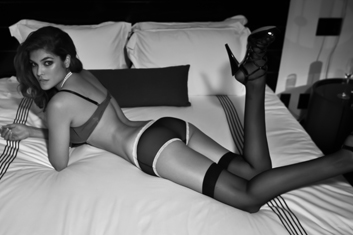 Changing tastes and fashions drive demand for plastic surgery. Expectations regarding the ideal body size and shape have changed a lot across time and cultures. Today, along with celebrity-inspired plastic surgery procedures like the Brazilian butt lift (BBL), there is a new trend – Snapchat Dysmorphia. This is a disorder that involves an obsession with selfies.
Changing tastes and fashions drive demand for plastic surgery. Expectations regarding the ideal body size and shape have changed a lot across time and cultures. Today, along with celebrity-inspired plastic surgery procedures like the Brazilian butt lift (BBL), there is a new trend – Snapchat Dysmorphia. This is a disorder that involves an obsession with selfies.
Plastic surgeons are expressing concern about selfie dysmorphia fuelled by heavily filtered online photos on social media. In a 2017 survey by the American Academy of Facial Plastic and Reconstructive Surgery, 55% of surgeons said patients’ motivation was to look better in selfies, up from just 13% in 2016.
According to a study by researchers from the dermatology department at the Boston University School of Medicine in the journal JAMA Facial Plastic Surgery, an increasing number of young people are turning to plastic surgery to improve their appearance motivated their filtered selfies on Snapchat. Dissatisfaction with their how they look in the mirror is leading the teens to approach plastic surgeons to make them look like their filtered selfies. Such platforms also serve as a marketplace for plastic surgery procedures, with doctors showcasing their patient’s before and after photos.
According to reports, this social media trend is driving the demand for the Brazilian butt lift, which surged by 19% in 2018. Celebrity “belfies” that are flooding Instagram feeds have contributed to BBL’s popularity. The latest Plastic Surgery Report from the American Society of Plastic Surgeons highlights that while boob implants and breast lifts still dominate, the Brazilian butt lift is fast gaining popularity. In 2018, 24,099 Americans got buttock augmentation through fat grafting. Invented by skilled plastic surgeons in NYC, Brazilian butt lift under local anesthesia (BBLULA) is a safe and relatively short wide awake procedure that minimizes anesthesia-related complications.
Seeking unnecessary and unrealistic cosmetic procedures also supports a diagnosis of body dysmorphic disorder (BDD). The Anxiety and Depression Association of America (ADAA) has reported that BDD affects around 2% of the population, or 1 in 50 people. Filtered selfies are also fueling the demand for bigger lips and taut jawlines.
Surgeons need to explain to those requesting unrealistic procedures that the look they want may be unachievable. To be a good candidate for cosmetic surgery, you need to have realistic expectations about the results.
